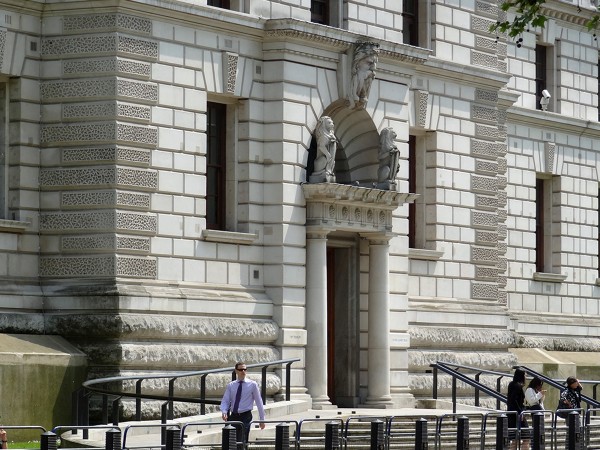 As the Chancellor of the Exchequer, Philip Hammond, delivers his first Autumn statement, both the Office for Budget Responsibility (OBR) and the National Institute for Economic and Social Research (NIESR) have published updated forecasts for government borrowing and government debt.
As the Chancellor of the Exchequer, Philip Hammond, delivers his first Autumn statement, both the Office for Budget Responsibility (OBR) and the National Institute for Economic and Social Research (NIESR) have published updated forecasts for government borrowing and government debt.
They show a rise in government borrowing compared with previous forecasts. The main reason for this is a likely slowdown in the rate of economic growth and hence in tax revenues, especially in 2017. Last March, the OBR forecast GDP growth of 2.2% for 2017; it has now revised this down to 1.4%.
This forecast slowdown is because of a likely decline in the growth of aggregate demand caused by a decline in investment as businesses become more cautious given the uncertainty about the UK’s relationships with the rest of the world post Brexit. There is also likely to be a slowdown in real consumer expenditure as inflation rises following the fall in the pound of around 15%.
But what might be more surprising is that the public finances are not forecast to deteriorate even further. The OBR forecasts that the deficit will increase by a total of £122bn to £216bn over the period from 2016/17 to 2020/21. The NIESR predicts that it will rise by only £50bn to £187bn – but this is before the additional infrastructure spending and other measures announced in the Autumn Statement.
 One reason is looser monetary policy. Following the Brexit vote, the Bank of England cut Bank Rate from 0.5% to 0.25% and introduced further quantitative easing. This makes it cheaper to finance government borrowing. What is more, the additional holdings of bonds by the Bank mean that the Bank returns to the government much of the interest (coupon payments) that would otherwise have been paid to the private sector.
One reason is looser monetary policy. Following the Brexit vote, the Bank of England cut Bank Rate from 0.5% to 0.25% and introduced further quantitative easing. This makes it cheaper to finance government borrowing. What is more, the additional holdings of bonds by the Bank mean that the Bank returns to the government much of the interest (coupon payments) that would otherwise have been paid to the private sector.
Then, depending on the nature of the UK’s post-Brexit relationships with the EU, there could be savings in contributions to the EU budget – but just how much, no-one knows at this stage.
Finally, it depends on just what effects the measures announced in the Autumn Statement will have on tax revenues and government spending. We will examine this in a separate blog.
But even though public-sector borrowing is likely to fall more slowly than before the Brexit vote, the trajectory is still downward. Indeed, the previous Chancellor, George Osborne, had set a target of achieving a public-sector surplus by 2019/20.
But, would eventually bringing the public finances into surplus be desirable? Apart from the dampening effect on aggregate demand, such a policy could lead to underinvestment in infrastructure and other public-sector capital. There is thus a strong argument for continuing to run a deficit on the public-sector capital account to fund public-sector investment – such investment will increase incomes and social wellbeing in the future. It makes sense for the government to borrow for investment, just as it makes sense for the private sector to do so.
Articles
Autumn Statement: Why the damage to the public finances from Brexit might not be as bad as some think Independent, Simon Kirby (22/11/16)
Three Facts about Debt and Deficits NIESR blogs, R Farmer (21/11/16)
Autumn Statement: Big increase in borrowing predicted BBC News, Anthony Reuben (23/11/16)
Data
Economic and fiscal outlook – November 2016 Office for Budget Responsibility (23/11/16)
Questions
- Why have the public finances deteriorated?
- How much have they deteriorated?
- What is likely to happen to economic growth over the next couple of years? Explain why.
- How has the cut in Bank Rate and additional quantitative easing introduced after the Brexit vote affected government borrowing?
- What is likely to happen to (a) public-sector borrowing; (b) public-sector debt as a proportion of GDP over the next few years?
- Why is a running a Budget surplus neither a necessary nor a sufficient condition for reducing the government debt to GDP ratio.
- What are the arguments for (a) having a positive public-sector debt; (b) increasing public-sector debt as a result of increased spending on infrastructure and other forms of public-sector capital?
 Back in October, we looked at the growing pressure in the UK for a sugar tax. The issue of childhood obesity was considered by the Parliamentary Health Select Committee and a sugar tax, either on sugar generally, or specifically on soft drinks, was one of the proposals being considered to tackle the problem. The committee studied a report by Public Health England, which stated that:
Back in October, we looked at the growing pressure in the UK for a sugar tax. The issue of childhood obesity was considered by the Parliamentary Health Select Committee and a sugar tax, either on sugar generally, or specifically on soft drinks, was one of the proposals being considered to tackle the problem. The committee studied a report by Public Health England, which stated that:
Research studies and impact data from countries that have already taken action suggest that price increases, such as by taxation, can influence purchasing of sugar sweetened drinks and other high sugar products at least in the short-term with the effect being larger at higher levels of taxation.
In his Budget on 16 March, the Chancellor announced that a tax would be imposed on manufacturers of soft drinks from April 2018. This will be at a rate of 18p per litre on drinks containing between 5g and 8g of sugar per 100ml, such as Dr Pepper, Fanta and Sprite, and 24p per litre for drinks with more than 8g per 100ml, such as Coca-Cola, Pepsi and Red Bull.
 Whilst the tax has been welcomed by health campaigners, there are various questions about (a) how effective it is likely to be in reducing childhood obesity; (b) whether it will be enough or whether other measures will be needed; and (c) whether it is likely to raise the £520m in 2018/19, falling to £455m by 2020/21, as predicted by the Treasury: money the government will use for promoting school sport and breakfast clubs.
Whilst the tax has been welcomed by health campaigners, there are various questions about (a) how effective it is likely to be in reducing childhood obesity; (b) whether it will be enough or whether other measures will be needed; and (c) whether it is likely to raise the £520m in 2018/19, falling to £455m by 2020/21, as predicted by the Treasury: money the government will use for promoting school sport and breakfast clubs.
These questions are all linked. If demand for such drinks is relatively inelastic, the drinks manufacturers will find it easier to pass the tax on to consumers and the government will raise more revenue. However, it will be less effective in cutting sugar consumption and hence in tackling obesity. In other words, there is a trade off between raising revenue and cutting consumption.
 This incidence of tax is not easy to predict. Part of the reason is that much of the market is a bilateral oligopoly, with giant drinks manufacturers selling to giant supermarket chains. In such circumstances, the degree to which the tax can be passed on depends on the bargaining strength and skill of both sides. Will the supermarkets be able to put pressure on the manufacturers to absorb the tax themselves and not pass it on in the wholesale price? Or will the demand be such, especially for major brands such as Coca-Cola, that the supermarkets will be willing to accept a higher price from the manufacturers and then pass it on to the consumer?
This incidence of tax is not easy to predict. Part of the reason is that much of the market is a bilateral oligopoly, with giant drinks manufacturers selling to giant supermarket chains. In such circumstances, the degree to which the tax can be passed on depends on the bargaining strength and skill of both sides. Will the supermarkets be able to put pressure on the manufacturers to absorb the tax themselves and not pass it on in the wholesale price? Or will the demand be such, especially for major brands such as Coca-Cola, that the supermarkets will be willing to accept a higher price from the manufacturers and then pass it on to the consumer?
Then there is the question of the response of the manufacturers. How easy will it be for them to reformulate their drinks to reduce sugar content and yet still retain sales? For example, can they produce a product which tastes like a high sugar drink,  but really contains a mix between sugar and artificial sweeteners – effectively a hybrid between a ‘normal’ and a low-cal version? How likely are they to reduce the size of cans, say from 330ml to 300ml, to avoid raising prices?
but really contains a mix between sugar and artificial sweeteners – effectively a hybrid between a ‘normal’ and a low-cal version? How likely are they to reduce the size of cans, say from 330ml to 300ml, to avoid raising prices?
The success of the tax on soft drinks in cutting sugar consumption depends on whether it is backed up by other policies. The most obvious of these would be to impose a tax on sugar in other products, including cakes, biscuits, low-fat yoghurts, breakfast cereals and desserts, and also many savoury products, such as tinned soups, ready meals and sauces. But there are other policies too. The Public Health England report recommended a national programme to educate people on sugar in foods; reducing price promotions of sugary food and drink; removing confectionery or other sugary foods from end of aisles and till points in supermarkets; setting broader and deeper controls on advertising of high-sugar foods and drinks to children; and reducing the sugar content of the foods we buy through reformulation and portion size reduction.
Articles
- Sugar tax: How it will work?
BBC News, Nick Triggle (16/3/16)
- Will a sugar tax actually work?
The Guardian, Alberto Nardelli and George Arnett (16/3/16)
- Coca-Cola and other soft drinks firms hit back at sugar tax plan
The Guardian, Sarah Butler (17/3/16)
- Sugar tax could increase calories people consume, economic experts warn
The Telegraph, Kate McCann, and Steven Swinford (17/3/16)
- Nudge, nudge! How the sugar tax will help British diets
Financial Times, Anita Charlesworth (18/3/16)
- Is the sugar tax an example of the nanny state going too far?
Financial Times (19/3/16)
- Government’s £520m sugar tax target ‘highly dubious’, analysts warn
The Telegraph, Ben Martin (17/3/16)
- Sorry Jamie Oliver, I’d be surprised if sugar tax helped cut obesity
The Conversation, Isabelle Szmigin (17/3/16)
- Sugar sweetened beverage taxes
What Works for Health (17/12/15)
Questions
- What determines the price elasticity of demand for sugary drinks in general (as opposed to one particular brand)?
- How are drinks manufacturers likely to respond to the sugar tax?
- How are price elasticity of demand and supply relevant in determining the incidence of the sugar tax between manufacturers and consumers? How is the degree of competition in the market relevant here?
- What is meant by a socially optimal allocation of resources?
- If the current consumption of sugary drinks is not socially optimal, what categories of market failure are responsible for this?
- Will a sugar tax fully tackle these market failures? Explain.
- Is a sugar tax progressive, regressive or proportional? Explain.
- Assess the argument that the tax on sugar in soft drinks may actually increase the amount that people consume.
- The sugar tax can be described as a ‘hypothecated tax’. What does this mean and is it a good idea?
- Compare the advantages and disadvantages of a tax on sugar in soft drinks with (a) banning soft drinks with more than a certain amount of sugar per 100ml; (b) a tax on sugar; (c) a tax on sugar in all foods and drinks.
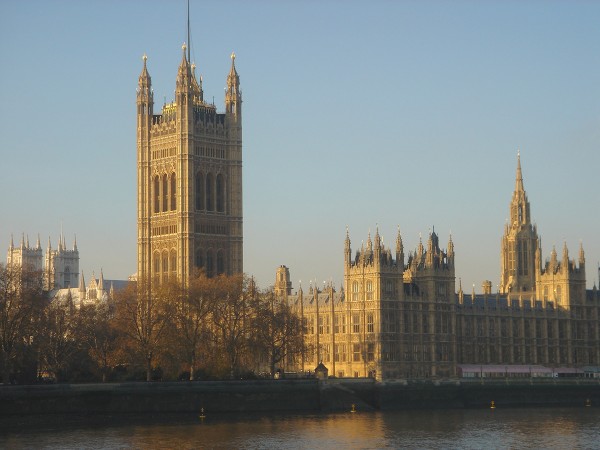 During the 1970s, commentators often referred to the ‘political business cycle’. As William Nordhaus stated in a 1989 paper. “The theory of the political business cycle, which analyzes the interaction of political and economic systems, arose from the obvious facts of life that voters care about the economy while politicians care about power.”
During the 1970s, commentators often referred to the ‘political business cycle’. As William Nordhaus stated in a 1989 paper. “The theory of the political business cycle, which analyzes the interaction of political and economic systems, arose from the obvious facts of life that voters care about the economy while politicians care about power.”
In the past, politicians would use fiscal, and sometimes monetary, policies to manipulate aggregate demand so that the economy was growing strongly at the time of the next election. This often meant doing unpopular things in the first couple of years of office to allow for popular things, such as tax cuts and increased government transfers, as the next election approached. This tended to align the business cycle with the election cycle. The economy would slow in the early years of a parliament and expand rapidly towards the end.
To some extent, this has been the approach since 2010 of first the Coalition and now the Conservative governments. Cuts to government expenditure were made ‘in order to clear up the mess left by the previous government’. At the time it was hoped that, by the next election, the economy would be growing strongly again.
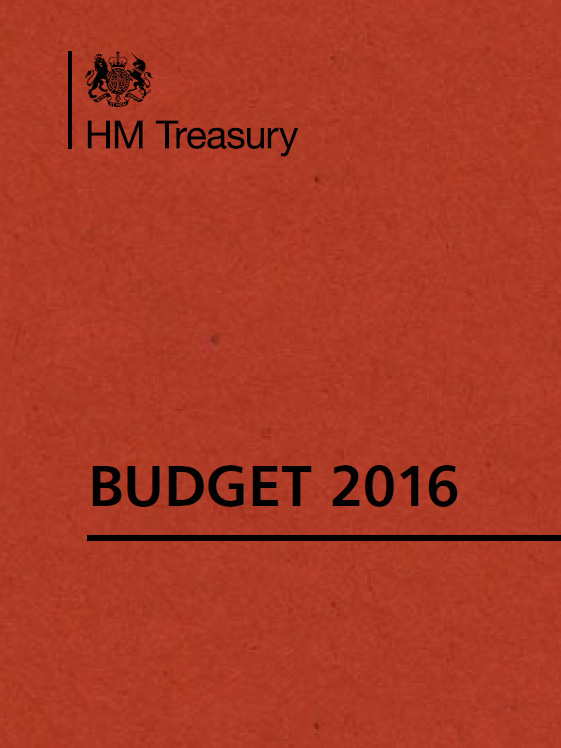 But in adopting a fiscal mandate, the current government could be doing the reverse of previous governments. George Osborne has set the target of a budget surplus by the final year of this parliament (2019–20) and has staked his reputation on achieving it.
But in adopting a fiscal mandate, the current government could be doing the reverse of previous governments. George Osborne has set the target of a budget surplus by the final year of this parliament (2019–20) and has staked his reputation on achieving it.
The problem, as we saw in the blog, Hitting – or missing – the government’s self-imposed fiscal targets is that growth in the economy has slowed and this makes it more difficult to achieve the target of a budget surplus by 2019–20. Given that achieving this target is seen to be more important for his reputation for ‘sound management’ of the public finances than that the economy should be rapidly growing, it is likely that the Chancellor will be dampening aggregate demand in the run-up to the next election. Indeed, in the latest Budget, he announced that specific measures would be taken in 2019–20 to meet the target, including a further £3.5 billion of savings from departmental spending in 2019–20. In the meantime, however, taxes would be cut (such as increasing personal allowances and cutting business rates) and government spending in certain areas would be increased. As the OBR states:
Despite a weaker outlook for the economy and tax revenues, the Chancellor has announced a net tax cut and new spending commitments. But he remains on course for a £10 billion surplus in 2019–20, by rescheduling capital investment, promising other cuts in public services spending and shifting a one-off boost to corporation tax receipts into that year.
But many commentators have doubted that this will be enough to bring a surplus. Indeed Paul Johnson, Director of the Institute for Fiscal Studies, stated on BBC Radio 4’s Today Programme said that “there’s only about a 50:50 shot that he’s going to get there. If things change again, if the OBR downgrades its forecasts again, I don’t think he will be able to get away with anything like this. I think he will be forced to put some proper tax increases in or possibly find yet further proper spending cuts”.
If that is the case, he will be further dampening the economy as the next election approaches. In other words, the government may be doing the reverse of what governments did in the past. Instead of boosting the economy to increase growth at election time, the government may feel forced to make further cuts in government expenditure and/or to raise taxes to meet the fiscal target of a budget surplus.
Articles
Budget 2016: George Osborne hits back at deficit critics BBC News (17/3/16)
George Osborne will have to break his own rules to win the next election Business Insider, Ben Moshinsky (17/3/16)
Osborne Accused of Accounting Tricks to Meet Budget Surplus Goal Bloomberg, Svenja O’Donnell and Robert Hutton (16/3/16)
George Osborne warns more cuts may be needed to hit surplus target Financial Times, Jim Pickard (17/3/16)
6 charts that explain why George Osborne is about to make austerity even worse Independent, Hazel Sheffield (16/3/16)
Budget 2016: Osborne ‘has only 50-50 chance’ of hitting surplus target The Guardian, Heather Stewart and Larry Elliott (17/3/16)
How will Chancellor George Osborne reach his surplus? BBC News, Howard Mustoe (16/3/16)
Osborne’s fiscal illusion exposed as a house of credit cards The Guardian, Larry Elliott (17/3/16)
The Budget’s bottom line: taxes will rise and rise again The Telegraph, Allister Heath (17/3/16)
Reports, analysis and documents
Economic and fiscal outlook – March 2016 Office for Budget Responsibility (16/3/16)
Budget 2016: documents HM Treasury (16/3/16)
Budget 2016 Institute for Fiscal Studies (17/3/16)
Questions
- Explain the fiscal mandate of the Conservative government.
- Does sticking to targets for public-sector deficits and debt necessarily involve dampening aggregate demand as an election approaches? Explain.
- For what reasons may the Chancellor not hit his target of a public-sector surplus by 2019–20?
- Compare the advantages and disadvantages of a rules-based fiscal policy and one based on discretion.
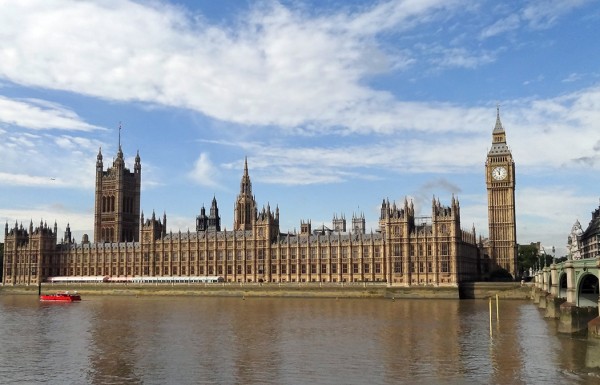 On election to office in May 2015, the UK’s Conservative government set new fiscal targets. These were set out in an updated Charter for Budget Responsibility. As Box 12.3 in Essentials of Economics (7th edition) states:
On election to office in May 2015, the UK’s Conservative government set new fiscal targets. These were set out in an updated Charter for Budget Responsibility. As Box 12.3 in Essentials of Economics (7th edition) states:
The new fiscal mandate set a target for achieving a surplus on public-sector net borrowing by the end of 2019/20. More controversially, government should then target a surplus in each subsequent year unless real GDP growth falls below 1 per cent … Meanwhile, the revised supplementary target for public-sector debt was for the net debt-to-GDP ratio to fall each year from 2015/16 to 2019/20.
What is more, the Charter requires the government to set a cap on welfare spending over a five-year period. 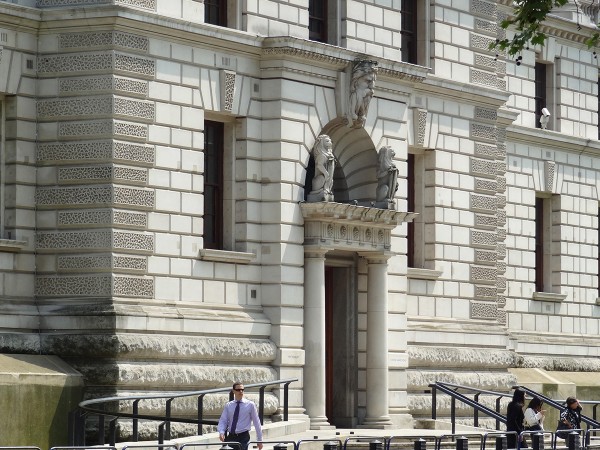 Such spending includes spending on pensions, tax credits, child benefit and unemployment benefit. In July 2015 the Chancellor set this cap at £115bn for 2016/17, a reduction of £12bn.
Such spending includes spending on pensions, tax credits, child benefit and unemployment benefit. In July 2015 the Chancellor set this cap at £115bn for 2016/17, a reduction of £12bn.
Whether or not such a tight fiscal target is desirable, the government has been missing the target. In November last year, the Chancellor had to backtrack on his plans to make substantial reductions in tax credits and as a result the welfare cap has been breached, as the following table from page 5 of the December 2015 House of Commons briefing paper shows.

Also, with the slowing of economic growth, the Chancellor has stated that he will miss the requirement for a fall in the net debt-to-GDP ratio unless further cuts in government spending are made, equivalent to 50p in every £100.
But, if the economy is slowing, is it right to cut government expenditure? In other words, should there be some discretion in fiscal policy to respond to economic circumstances? There are two issues here. The first is whether the resulting cut in aggregate demand will be detrimental to growth. The second is who will bear the cost of such cuts. Critics of the government claim that it will largely the poor who will lose if the cuts are made mainly from benefits.
The articles below examine the public finances, the difficulties George Osborne has been facing in sticking to his fiscal mandate and the options open to him.
Articles
Budget 2016: Osborne’s economic fitness regime BBC News, Andy Verity (14/3/16)
Budget 2016: George Osborne fuels speculation of nasty shocks The Guardian, Larry Elliott and Anushka Asthana (14/3/16)
Official publications
Charter for Budget Responsibility: Summer Budget 2015 update HM Treasury (July 2015)
OBR publications, including ‘Economic and fiscal outlook’ and ‘Fiscal sustainability report’ Office for Budget Responsibility
Questions
- Outline the main points of the Charter for Budget Responsibility (CBR).
- What are the arguments for sticking to fiscal rules, such as those in the CBR?
- What are the arguments for using discretion to adjust fiscal policy as economic circumstances change?
- Compare the Conservative government’s fiscal mandate with the newly announced approach to fiscal policy of the Labour opposition?
- How does the Labour Party’s new approach differ from the Golden Rule followed by Gordon Brown as Chancellor in the Labour government from 1997 to 2007?
- What factors will determine whether or not the government will return to meeting the rules set out in the Charter for Budget Responsibility?
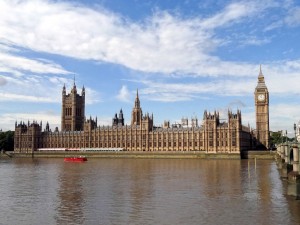 On 21 March, the Chancellor of the Exchequer, George Osborne, delivered the 2012 Budget for the UK. The details of the tax and benefit changes can be found in the Budget Report, with the Treasury’s summary of the tax changes here.
On 21 March, the Chancellor of the Exchequer, George Osborne, delivered the 2012 Budget for the UK. The details of the tax and benefit changes can be found in the Budget Report, with the Treasury’s summary of the tax changes here.
One of the key elements in the Budget was the reduction in the top rate of income tax from 50% to 45% from April 2013. The Chancellor argued that the introduction of the 50% rate in 2010 had raised very little extra tax revenue. Partly this was the result of people managing their tax affairs so that they could bring forward income to the year before the 50% rate was introduced – a practice known as forestalling. People are likely to do the reverse with the latest tax change and delay receiving income until next year. For details of the effects of forestalling, see the Office for Budget Responsibility’s Economic and fiscal outlook charts and tables Box 4.2a.
But part of the reason for the 50% tax rate raising relatively little has been the effect on incentives. A rise in the top rate of income tax can encourage people to move from the country – or move their incomes; it may discourage top earners from working more; it may encourage people to engage in various tax avoidance schemes; it may encourage people to evade taxes by not declaring all their income.
The effect of a rise (or fall) in the marginal income tax rate (t) on taxable income is given by the taxable income elasticity (TIE). This is defined as the proportionate change in taxable income (Y) divided by the proportionate change in the net-of-income-tax rate (r) (where r = 100 – t: i.e. the percentage of an extra pound that is not paid in income tax, but is retained by the taxpayer for spending or saving). TEI is thus ΔY/Y ÷ Δr/r. The larger the disincentive effect of raising taxes, the more will taxable income fall and hence the higher will be the value of TIE.
The Office for Budget Responsibility (OBR) in 2010 based its calculations on a TIE of 0.35 for the rise in the top marginal rate of income tax from 40% to 50%. This means that for each 1% fall in the net-of-income-tax rate, taxable income would fall by 0.35%. With a TIE of 0.35, the OBR calculated that the new top rate would bring an extra £2.9bn per year by 2011-12 (after allowing for any temporary residual effects of forestalling). However, the OBR now believes that the TIE is significantly higher and that the 50% rate will bring only an extra £0.7bn in 2011/12.
In its analysis of the effects of a cut in the top rate from 50% to 45%, the OBR has assumed a TIE of 0.45.
Turning to the costing of the move to 45 per cent, measured against our baseline that reflects the new information on the 50 per cent yield, we have endorsed as reasonable and central the Government’s estimate that the underlying cost would be around £0.1 billion in 2013-14, based on an assumed TIE of 0.45. The figure is as low as this because a TIE of 0.45 implies that the revenue-maximising additional tax rate is around 48 per cent. Moving from just above to just below this rate would therefore have very little revenue impact. Moving the additional rate back to 40 per cent would take it further below the revenue maximising rate and would thus be more expensive at roughly an additional £600 million. But for the reasons set out above we would again emphasise the huge uncertainties here.
Economic and fiscal outlook – March 2012 (p110)
The government’s arguments for reducing the top tax rate, therefore, are that it will have little effect on tax revenue, but would have a significant effect in encouraging inward investment, discouraging emigration of high earners and encouraging high earners to work more.
Articles
Rich tax cuts offset by changes to relief Financial Times, Vanessa Houlder (21/3/12)
Budget 2012: A big debate about small numbers (cont’d) BBC News, Stephanie Flanders (21/3/12)
Budget 2012: End of 50p tax, but 45p rate here to stay The Telegraph, Robert Winnett (21/3/12)
Budget 2012: Top income tax rate ‘won’t go any lower than 45p’ This is Money, Tim Shipman (22/3/12)
Why is tax avoidance a reason for letting people off tax? New Statesman, Alex Hern (22/3/12)
Study: Millionaires Don’t Flee States Due To Tax Hikes Think Progress, Pat Garofalo (22/3/12)
Laffer Curve Fun, with a side serving of nepotism Mark Wadsworth blog (22/3/12)
Budget 2012: are we really all in this together? Guardian, Polly Curtis (21/3/12)
Did the 50p tax rate really raise less than £1 billion in 2010/11? Touch Stone, Howard Reed (22/3/12)
45p: Power beats evidence Stumbling and Mumbling, Chris Dillow (22/3/12)
Reports, documents and presentations
Economic and fiscal outlook – March 2012 OBR
Budget 2012 HM Treasury (21/3/12)
Budget 2012 IFS (March 2012)
The Exchequer effect of the 50 per cent additional rate of income tax HMRC (March 2012)
Can More Revenue be Raised by Increasing Income Tax Rates for the Very Rich? IFS, Mike Brewer and James Browne (2009)
The 50p income tax rate IFS, James Browne (March 2012)
Questions
- What are the arguments for and against reducing the top rate of income tax from 50% to 45%? Do the same arguments apply to a further reduction to 40%?
- According to the OBR, at what top tax rate is the top of the Laffer curve?
- Why are the OBR’s calculations subject to considerable possible error?
- Why might a fall in the top tax rate from 50% to 40% not exactly reverse all the effects of an earlier rise in the top tax rate from 40% to 50%? In other words, why may the effects not be symmetrical?
- Distinguish between the income and substitution effects of a change in income tax rates. Which is assumed to be larger by the OBR in the case of reducing the top rate of income tax from 50% to 45%? Explain.
 As the Chancellor of the Exchequer, Philip Hammond, delivers his first Autumn statement, both the Office for Budget Responsibility (OBR) and the National Institute for Economic and Social Research (NIESR) have published updated forecasts for government borrowing and government debt.
As the Chancellor of the Exchequer, Philip Hammond, delivers his first Autumn statement, both the Office for Budget Responsibility (OBR) and the National Institute for Economic and Social Research (NIESR) have published updated forecasts for government borrowing and government debt. One reason is looser monetary policy. Following the Brexit vote, the Bank of England cut Bank Rate from 0.5% to 0.25% and introduced further quantitative easing. This makes it cheaper to finance government borrowing. What is more, the additional holdings of bonds by the Bank mean that the Bank returns to the government much of the interest (coupon payments) that would otherwise have been paid to the private sector.
One reason is looser monetary policy. Following the Brexit vote, the Bank of England cut Bank Rate from 0.5% to 0.25% and introduced further quantitative easing. This makes it cheaper to finance government borrowing. What is more, the additional holdings of bonds by the Bank mean that the Bank returns to the government much of the interest (coupon payments) that would otherwise have been paid to the private sector.








